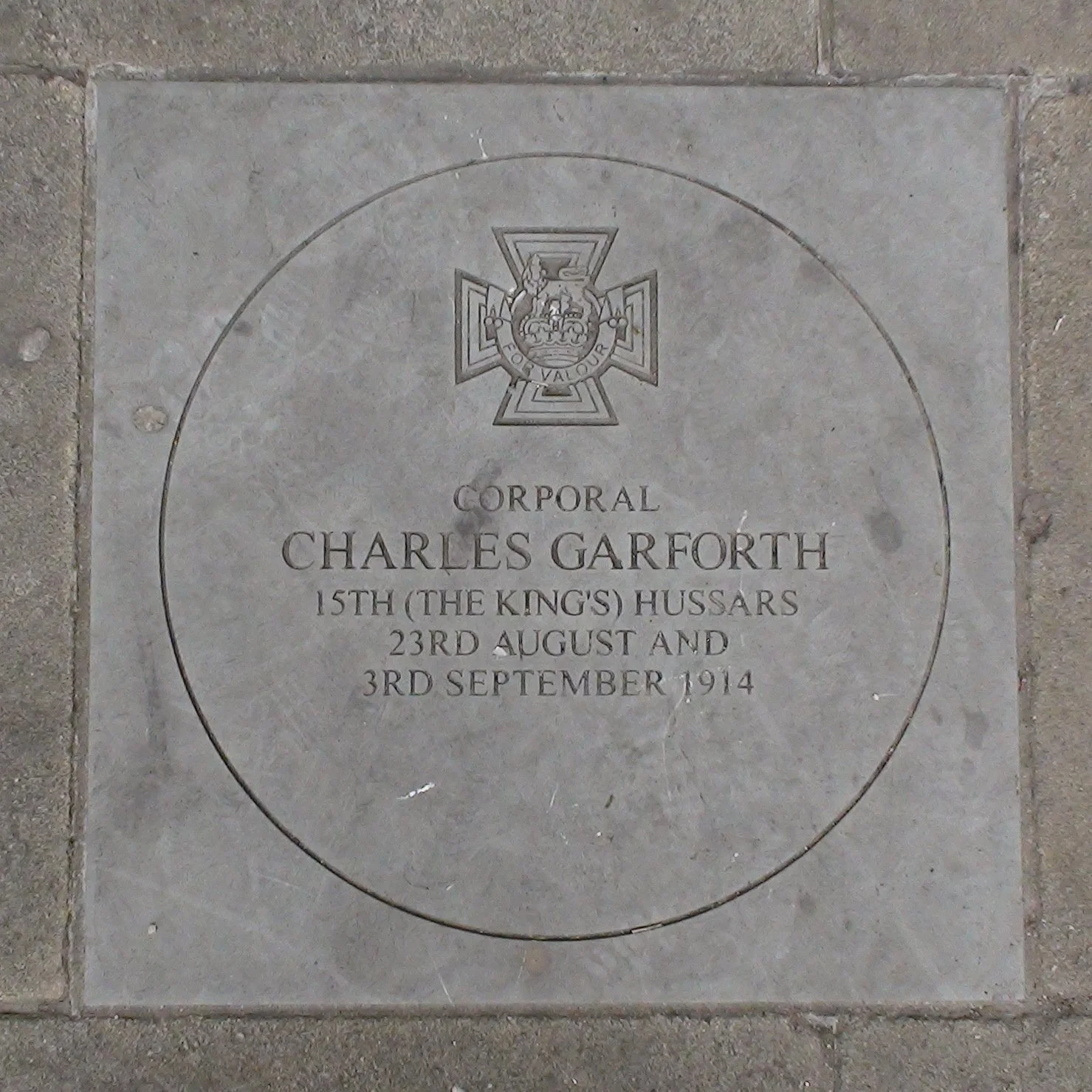Charles Garforth VC (1891-1973)
Charles Ernest Garforth was born in a house on Chaplin Road, Willesden Green in 1891. He was one of 10 children. At the age of 18 Garforth joined the ninth Battalion Duke of Cambridge’s Own (Middlesex) Regiment of the Territorial Army.
He went on to become a Corporal in the British Army fighting for four years during First World War. It was during this time that Garforth undertook heroic acts in France and Belgium, for which he would later be recognised with the highest honour of the British decorations system.
Commemorative Stone laid on Lechmere Road, NW2
In addition to his Victoria Cross, he was awarded the 1914 Star with Mons clasp, British War Medal 1914-20, Victory Medal 1914-19 with Mentioned in Despatches oak leaf, George VI Coronation Medal of 1937 and Elizabeth II Coronation Medal of 1953. His medals were donated to the Imperial War Museum and are displayed in the Ashcroft Gallery.Garforth was a corporal in the 15th (The King's) Hussars. On 23rd August 1914 at Harmingnies, Belgium, he extricated and carried to safety a sergeant, who was lying under his dead horse. During the next fortnight, Garforth was involved in two further actions, when he showed extraordinary bravery in the face of danger. In one incident, when another sergeant had lost his horse, he drew off the enemy fire and enabled the sergeant to get away.
Garforth was eventually captured in October 1914 and held prisoner at Hameln and Brohmte, in Germany, until November 1918. He was awarded the Victoria Cross for his heroic actions, presented to him by King George V at Buckingham Palace on 19th December 1918.
Exactly 100 years to the day from his first act of bravery, on the 23rd August 2014, Charles Garforth become one of the first in the country to have a paving stone laid to honour his gallantry during the First World War. A commemorative slab placed in Lechmere Road, near his birthplace.
Charles Garforth, Source: Archant


